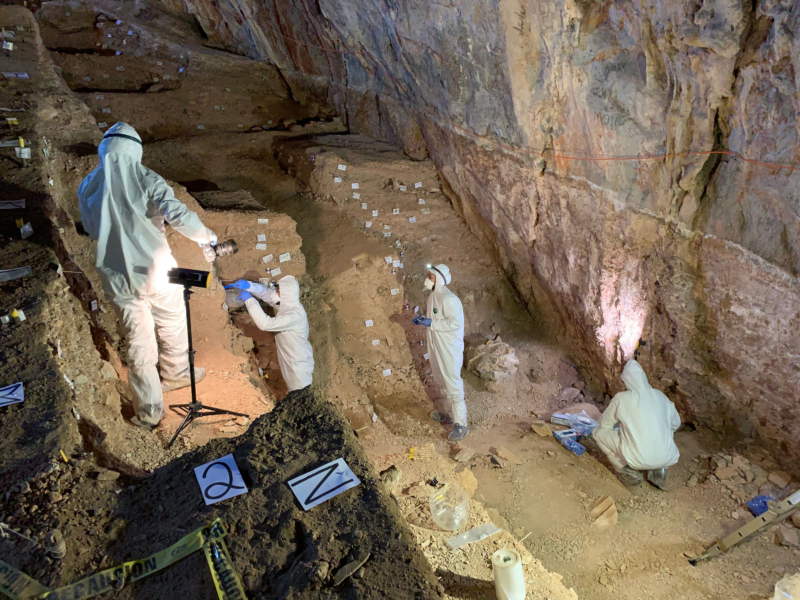People may have lived in North America by 30,000 years ago

Enlarge / Assistant professor Mikkel Winther Pedersen with team members wore PPE to avoid contaminating potential ancient DNA in the cave; no human DNA was found. (credit: Mads Thomsen)
In Chiquihuite Cave, archaeologists found 240 stone tools buried in 30,000-year-old layers of muddy sediment. Archaeologist Ciprian Ardelean and his colleagues collected 46 radiocarbon dates from bone, charcoal, and sediment near the tools. According to a statistical model-which used those dates to predict the most likely starting date for the layer of sediment and artifacts-the oldest layers at the site date back 33,000 to 31,000 years ago.
If the archaeologists are right, that means people were making a living high in the mountains of north-central Mexico well before most people in the field thought North America was inhabited by humans.
At the moment, most archaeologists accept the idea that people started moving into North America sometime between 20,000 and 16,000 years ago. Those dates come from sites like Cooper's Ferry in Idaho and a handful of others. Around that time, the ice sheets covering the northern half of the continent had started to recede after reaching their peak during the Last Glacial Maximum, the height of the last ice age. People could have skirted around the western edge of the ice, along the Pacific coast, or ventured through a corridor that later opened up between the ice sheets (archaeologists are still debating which route they took).
Read 17 remaining paragraphs | Comments